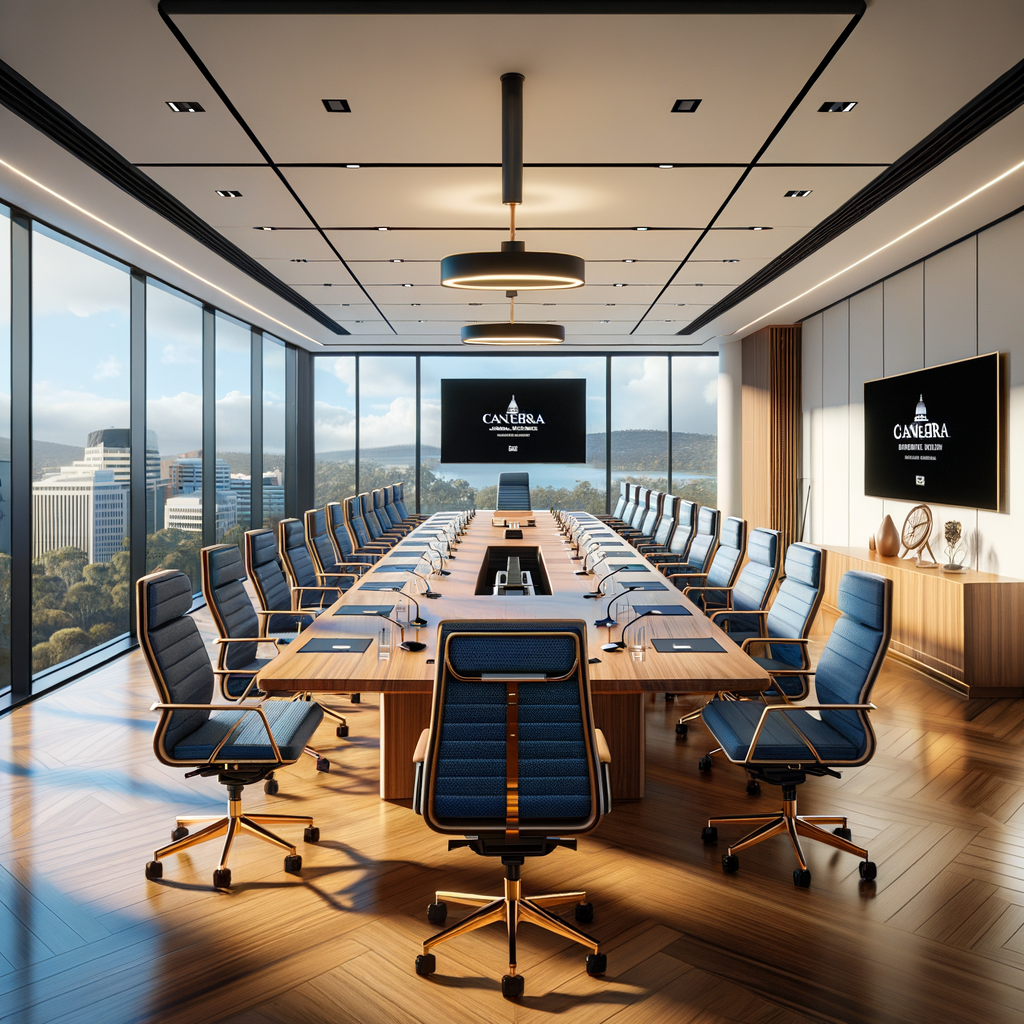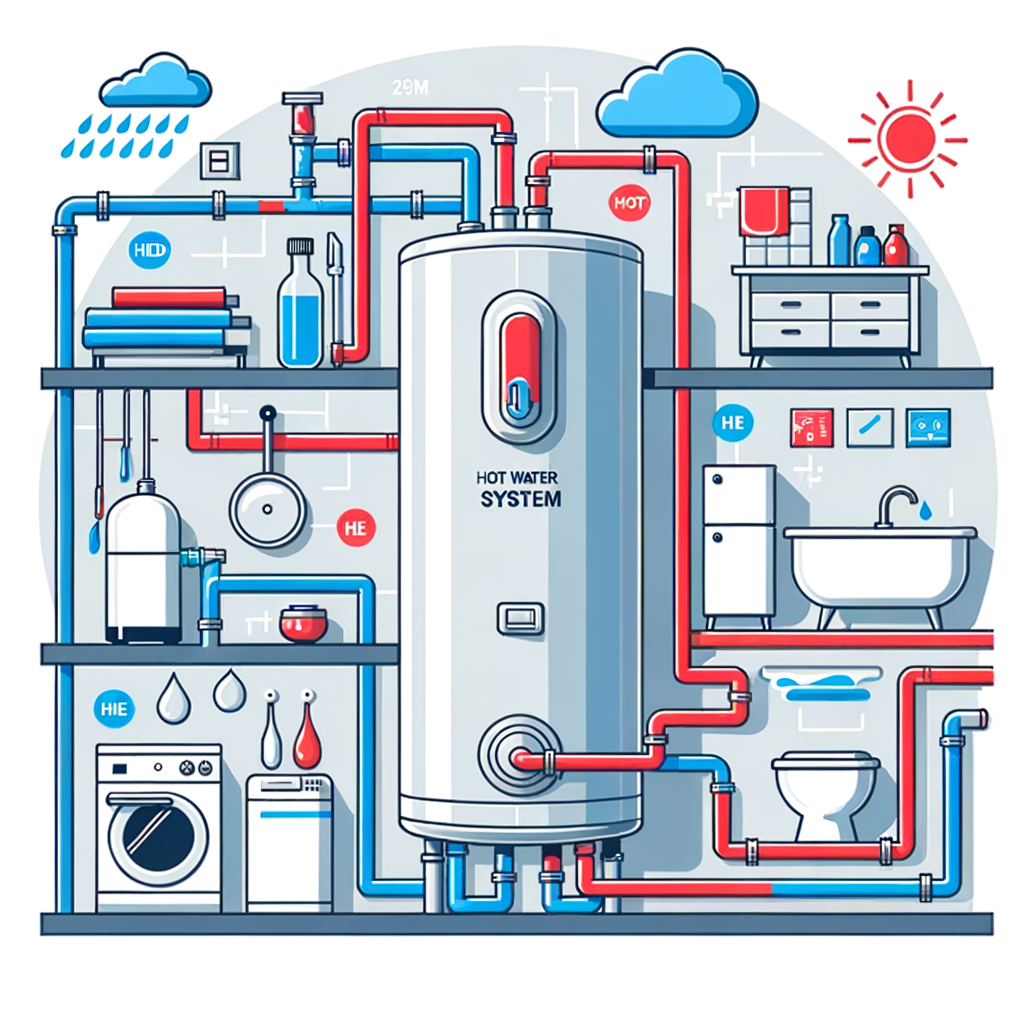Mayrics News
Sign Up with our website to get regular news updates from us.
Trending
Most Popular

Recent
Must See
Our Blog
Personalized Experiences: Customizable Meeting Rooms Tailored to Your Needs in Canberra
In today’s fast-paced business landscape, the demand for personalized experiences extends beyond products and services—it now encompasses meeting spaces as well. From startups to multinational corporations, professionals are seeking meeting environments that cater to their specific requirements, offering flexibility, comfort, and productivity. This article explores the concept of personalized meeting rooms, their significance, and why they are increasingly becoming a staple in business settings, with a particular focus on Canberra.
The Significance of Customization
In a world where one size rarely fits all, the significance of customization cannot be overstated. Customizable meeting rooms empower users to tailor their environments according to their unique needs and preferences. Whether it’s the layout, amenities, or technological capabilities, customization enhances user satisfaction and overall meeting outcomes.
Understanding the Needs of Users
To design effective personalized meeting spaces, it’s essential to understand the diverse needs of users. From large corporate gatherings to intimate brainstorming sessions, meeting requirements vary widely. Flexibility is key, allowing rooms to adapt seamlessly to different purposes and group sizes.
Tailoring Spaces to Specific Requirements
Versatility lies at the heart of personalized meeting rooms Canberra. These spaces offer a range of customizable features, from adjustable furniture configurations to advanced audiovisual systems. Users can create environments that foster collaboration, creativity, and engagement.
Technology Integration
Technology plays a crucial role in modern meeting experiences. Integrating cutting-edge tech solutions enhances communication, connectivity, and productivity. From interactive displays to video conferencing capabilities, technology enables seamless collaboration regardless of physical location.
Adapting to Different Group Sizes
Meeting room requirements can vary significantly based on group size. Personalized meeting spaces are designed to accommodate small teams, large conferences, and everything in between. Flexible layouts and scalable amenities ensure optimal comfort and functionality for all users.
Creating Comfortable Environments
Comfort is a cornerstone of effective meetings. Personalized meeting rooms prioritize user comfort through ergonomic furniture, climate control, and ambient lighting. By creating inviting environments, businesses can enhance attendee satisfaction and overall meeting success.
Enhancing Productivity
Customizable meeting rooms are proven to boost productivity. By providing tailored environments that meet the specific needs of users, businesses can maximize efficiency and creativity. From reducing setup time to eliminating distractions, personalized spaces empower teams to focus on what matters most.
Addressing Accessibility Needs
Inclusivity is paramount in meeting room design. Personalized meeting spaces incorporate accessible features to accommodate users of all abilities. This includes wheelchair accessibility, hearing loop systems, and other accommodations to ensure equal participation for everyone.
Location Matters: The Case of Canberra
As the capital city of Australia, Canberra boasts a vibrant business community with diverse meeting needs. From government agencies to private enterprises, organizations in Canberra require flexible, customizable meeting spaces to facilitate collaboration and innovation.
Meeting Rooms in Canberra: Current Scenario
While Canberra offers a range of meeting room options, the demand for personalized spaces remains largely unmet. Many existing facilities lack the flexibility and customization features sought by today’s professionals, creating an opportunity for providers to fill this gap in the market.
The Rise of Tailored Meeting Spaces
As businesses increasingly prioritize personalized experiences, the demand for tailored meeting spaces is on the rise. Providers that offer customizable solutions are well-positioned to capitalize on this trend, catering to the evolving needs of Canberra’s business community.
Benefits for Businesses in Canberra
For businesses in Canberra, investing in personalized meeting rooms offers numerous benefits. From increased efficiency and productivity to enhanced client experiences, customizable spaces can drive business growth and success in the region.
Choosing the Right Meeting Room Provider
When selecting a meeting room provider in Canberra, it’s essential to consider several factors. These include location, facilities, pricing, and reputation. By carefully evaluating options and choosing a provider that aligns with their needs, businesses can ensure successful meetings and positive outcomes.
Conclusion
In conclusion, personalized meeting rooms offer a tailored approach to business gatherings, catering to the diverse needs of today’s professionals. By prioritizing flexibility, comfort, and productivity, these spaces enhance collaboration and innovation, driving business success. In Canberra, where demand for customizable meeting rooms is on the rise, providers have an opportunity to meet this need and capitalize on the growing market. By choosing the right meeting room provider, businesses can unlock the full potential of personalized meeting experiences, setting the stage for meaningful connections and fruitful outcomes.
Estimating the Cost of Polished Concrete Floors for Your Project
Hey there, friend! Considering sprucing up your space with those trendy polished concrete floors? What a fantastic idea! But before you get too ahead of yourself, let’s delve into something vital: the cost. Figuring out how much those polished concrete floors will set you back involves a few key considerations. Don’t fret; I’ve got your back.
Factors Impacting Polished Concrete Floor Costs
Alright, let’s talk materials. The type you opt for can significantly sway the cost. Whether you choose a simple polish or go all out with decorative elements, expect the price tag to reflect your choices. Basic concrete polishing might be on the more budget-friendly side, but if you’re eyeing those intricate designs or incorporating special aggregates, be prepared to shell out a bit more. It’s all about finding that balance between your desired aesthetic and your budget constraints.
Considering Floor Size
Size matters, my friend. The larger the floor area or the more intricate the design, the more materials and labor you’ll require, which translates to more cash. Whether you’re working with a small residential space or a sprawling commercial area, the size of your floor directly impacts the overall cost of polishing. Larger areas require more materials, labor, and time to complete, which naturally results in higher costs. Additionally, if your design includes intricate patterns or decorative elements, this can also drive up expenses. It’s essential to take floor size into account when estimating costs to avoid any surprises down the road.
Budgeting Tips
Let’s talk budgeting, shall we? It might not be the most exciting topic, but it’s essential. Be realistic, plan for unexpected expenses, and leave a bit of wiggle room. Your future self will thank you, promise. When it comes to budgeting for your polished concrete floor project, it’s crucial to be realistic. Factor in all potential costs, including materials, labor, equipment, and any unforeseen expenses that may arise. It’s always a good idea to set aside a contingency fund to cover unexpected costs or changes to the project scope. And don’t forget to leave a bit of wiggle room in your budget for those inevitable surprises. By planning ahead and budgeting wisely, you can ensure that your project stays on track financially and avoid any unpleasant financial surprises along the way.
Calculating Total Costs
So, how do you crunch the numbers? Start by totaling up material costs, then factor in labor and equipment expenses. And don’t forget to adjust for floor condition and size. It’s a bit like putting together a puzzle—time-consuming but totally worth it. Once you’ve gathered all the necessary information, it’s time to do some number-crunching. Add up the costs of materials, including any decorative elements or special aggregates, then estimate labor and equipment expenses based on the scope of your project. Be sure to account for any repairs or surface preparation needed, as well as the size of the floor area to be polished. By considering all these factors, you’ll be able to arrive at a more accurate estimate of your total project costs.
Comparing Estimates
Shopping around for quotes is your best bet. But remember, it’s not just about the price tag. Take into account the quality of materials and services offered too. Once you’ve gathered estimates from multiple contractors, it’s time to compare. While it may be tempting to go with the lowest bid, keep in mind that quality matters too. Consider the reputation of the contractors, the types of materials they use, and the level of craftsmanship they offer. Sometimes, paying a bit more upfront for superior quality can save you money in the long run by reducing the need for repairs or replacements down the line. Choose wisely, and remember that the cheapest option isn’t always the best option.
Labor Expenses
Now, let’s discuss the wizards behind the scenes—the laborers. How skilled are they? How many hours will they clock in? And let’s not forget about your location; that can play a role in labor costs too. Skilled labor is essential for achieving that flawless finish, but it comes at a price. Additionally, labor costs can vary depending on where you’re located. Urban areas tend to have higher labor rates compared to rural areas. Factor in the expertise required and the labor hours needed for your project to get a clear picture of your labor expenses.
Equipment Investments
You’re going to need some serious gear for this job. Renting or buying—it’s a decision that’ll impact your budget. Choose wisely, my friend. Polishing concrete floors requires specialized equipment such as grinders, polishers, and dust containment systems. While buying might seem like a hefty upfront investment, especially for DIY enthusiasts, it could save you money in the long run if you plan on tackling future projects. On the other hand, renting equipment might be more cost-effective for one-time projects or if you’re unsure about handling the equipment yourself.
Evaluating Floor Condition
What’s the deal with your current floor situation? Does it need extensive prep work or repairs? These factors can tack on some extra bucks to your total. The condition of your existing floor plays a significant role in determining the overall cost of polishing. If your floor has imperfections such as cracks, spalling, or uneven surfaces, these will need to be addressed before polishing can commence. Depending on the extent of repairs needed, this can add both time and cost to your project. It’s crucial to thoroughly assess the condition of your floor and factor in any necessary repairs when estimating costs.
Benefits of Polished Concrete Floors
Now, onto the good stuff! These floors are as tough as nails, a breeze to maintain, and seriously stylish. Plus, they can elevate the ambiance of any space. Talk about a win-win! Polished concrete floors offer a range of benefits that make them an attractive choice for both residential and commercial spaces. First and foremost, they’re incredibly durable, able to withstand heavy foot traffic and daily wear and tear without showing signs of damage. Additionally, they’re easy to clean and maintain, requiring minimal upkeep to keep them looking their best. And let’s not forget about the aesthetic appeal—polished concrete floors have a sleek, modern look that can enhance the overall ambiance of any room. Whether you’re going for an industrial-chic vibe or a more polished aesthetic, these floors are sure to impress.
Potential Drawbacks
But hey, let’s keep it real. There are downsides too, like the upfront cost and environmental concerns. It’s all about weighing the pros and cons. While polished concrete floors offer many benefits, they’re not without their drawbacks. One of the most significant drawbacks is the upfront cost. Polishing concrete floors can be expensive, especially if you’re opting for more intricate designs or decorative elements. Additionally, the production of concrete can have environmental impacts, including carbon emissions and energy consumption. However, it’s worth noting that concrete is a highly durable and long-lasting material, which can help offset some of these environmental concerns. Ultimately, it’s essential to weigh the pros and cons carefully and consider your priorities and budget before making a decision.
Choosing the Right Contractor
Last but not least, choose your contractor wisely. Look for experience, a stellar reputation, and a killer portfolio. You want someone who’ll knock it out of the park. When it comes to selecting a contractor for your polished concrete floor project, don’t skimp on research. Look for contractors with years of experience in the industry and a proven track record of delivering high-quality results. Check out online reviews and ask for references to get a sense of their reputation. And don’t forget to take a look at their portfolio to see examples of their past work. Ultimately, you want to choose a contractor who understands your vision and can bring it to life with skill and expertise. By taking the time to find the right contractor, you’ll ensure that your project is in good hands from start to finish.
Conclusion
Estimating the cost of polished concrete floors isn’t exactly a cakewalk, but it’s totally doable. By taking material costs, labor expenses, equipment needs, floor condition, and size into account, you’ll be well on your way to a successful project. So, go ahead, let those floors shine, and enjoy all the perks they bring to the table.
How to Maintain Your Aluminium Windows for Longevity
Aluminium windows are like the unsung heroes of your home – dependable, robust, and often overlooked until something goes awry. But, much like any other part of your house, they require a bit of attention to maintain their shine and functionality. So, let’s delve into some simple yet effective tips to care for your aluminium windows and ensure they stand the test of time.
Getting Acquainted with Your Aluminium Windows
Aluminium windows are prized for their durability, sleek appearance, and resistance to rust and corrosion. They’re lightweight yet strong, making them an ideal choice for modern homes. Understanding the basics of aluminium windows, such as their composition and properties, will help you better care for them in the long run.
Common Issues You Might Encounter
Despite their durability, aluminium windows can still face some common issues over time. Corrosion is one of the primary concerns, especially in coastal areas or regions with high humidity. Additionally, wear and tear from regular use can lead to issues with hinges, locks, and seals, affecting the window’s performance and energy efficiency.
Keeping Things Clean and Tidy
Regular cleaning and maintenance are essential for preserving the appearance and functionality of your aluminium windows. Start by gathering the necessary tools, such as a mild detergent, soft brush or sponge, and a bucket of warm water. Then, gently scrub the frames and glass to remove dirt and grime, rinse thoroughly, and dry with a soft cloth to prevent water spots.
Fending Off Corrosion
Corrosion can be a significant threat to aluminium windows, but with proper care, you can prevent it from taking hold. Look for protective coatings specifically designed for aluminium surfaces, and apply them according to the manufacturer’s instructions. Regular inspections can help you catch any signs of corrosion early on, allowing you to address them before they worsen.
Handling Wear and Tear with Care
As with any mechanical system, the moving parts of aluminium windows are susceptible to wear and tear over time. Keep an eye on hinges, locks, and other components, and replace any that show signs of deterioration. Lubricating moving parts with a silicone-based lubricant can help prevent premature wear and ensure smooth operation.
Improving Insulation Efforts
While aluminium windows are not known for their insulation properties, there are steps you can take to improve their energy efficiency. Installing weatherstripping around the frames can help seal out drafts and reduce heat loss, while upgrading to double-glazed windows can provide additional insulation and noise reduction benefits.
Banishing Condensation Woes
Condensation buildup on aluminium windows can be a common problem, especially in humid environments. To reduce condensation, ensure proper ventilation throughout your home by using exhaust fans in kitchens and bathrooms and opening windows when weather permits. Additionally, using a dehumidifier can help remove excess moisture from the air.
Knowing When to DIY and When to Seek Help
While many maintenance tasks can be done DIY, there are times when it’s best to leave it to the professionals. Simple tasks like cleaning and lubricating can usually be handled on your own, but more complex issues, such as repairing damaged frames or seals, may require the expertise of a professional window technician.
Planning for the Long Term
Developing a maintenance schedule and sticking to it is crucial for the long-term health of your aluminium windows. Keep track of when you last performed maintenance tasks, such as cleaning and lubricating, and schedule regular inspections to catch any potential issues before they escalate.
Eco-Friendly Practices for the Win
In addition to caring for your aluminium windows, it’s essential to consider the environmental impact of your maintenance efforts. Opt for eco-friendly cleaning products whenever possible, and explore recycling options for old windows rather than sending them to the landfill. By taking these steps, you can reduce your carbon footprint and help protect the planet.
Sharing Is Caring
Finally, don’t keep all these maintenance tips to yourself! Share them with friends, family, and neighbors to help everyone keep their aluminium windows in top shape for years to come. Together, we can ensure that our homes remain beautiful, comfortable, and energy-efficient for generations to come.
In Conclusion
Maintaining your aluminium windows doesn’t have to be a daunting task. With a bit of regular care and attention, you can keep them looking great and functioning smoothly for years to come. So, roll up your sleeves, gather your tools, and get ready to give your windows the TLC they deserve!
Addressing Common Concerns: Safety and Comfort in Vehicles for Handicapped Passengers
When we talk about transportation, ensuring safety and comfort is paramount for all passengers. However, for handicapped individuals, these considerations take on even greater significance. In this article, we delve into the intricacies of providing safe and comfortable transportation solutions for handicapped passengers, examining the features and options available to meet their unique needs.
Understanding the Needs of Handicapped Passengers
Handicapped passengers encompass a diverse range of individuals with varying types of disabilities, from physical impairments to sensory challenges. Navigating transportation systems can pose significant challenges for them, highlighting the importance of accessible vehicles equipped to accommodate their needs.
Safety Features in Vehicles for Handicapped Passengers
Safety features play a crucial role in ensuring the well-being best vehicle forhandicapped passengers during transit. Modern vehicles offer a range of specialized safety features tailored to their needs, including wheelchair restraints, anti-slip flooring, and secure seating arrangements. These features provide peace of mind to passengers and caregivers alike, minimizing the risk of accidents or injuries during travel.
Comfort Features in Vehicles for Handicapped Passengers
In addition to safety considerations, comfort is equally vital for handicapped passengers, many of whom may spend extended periods in transit. Features such as spacious interiors, adjustable seating options, climate control systems, and entertainment features enhance the overall travel experience, ensuring passengers remain comfortable and relaxed throughout their journey.
Adaptability and Customization Options
Recognizing the diverse needs of handicapped passengers, vehicle manufacturers offer a range of adaptability and customization options. From vehicle modification services to adaptive driving aids, these solutions empower individuals to tailor their vehicles to suit their specific requirements, enhancing both safety and comfort.
Best Vehicle Options for Handicapped Passengers
Selecting the right vehicle is essential for meeting the needs of handicapped passengers. Minivans with ramp conversions, SUVs with wheelchair lifts, and full-size vans with side-entry conversions are among the top choices, providing ample space and accessibility features to accommodate wheelchairs and mobility devices effectively.
Budget Considerations
While investing in an accessible vehicle may require upfront financial commitment, the long-term benefits often outweigh the initial costs. Various financial assistance programs and grants are available to help offset expenses, making accessible transportation more attainable for individuals and families.
User-Friendly Features
User-friendly design elements, such as easy-to-use controls and intuitive entry and exit options, further enhance the accessibility of vehicles for handicapped passengers. Low-floor designs, in particular, facilitate seamless entry and exit, ensuring a hassle-free travel experience for all passengers.
Testimonials and Real-Life Experiences
Real-life testimonials from handicapped passengers and their families offer valuable insights into the impact of accessible vehicles on their daily lives. These stories highlight the transformative effect of having reliable and comfortable transportation, enabling individuals to maintain independence and participate fully in society.
Comparative Analysis of Top Vehicle Models
When choosing a vehicle for a handicapped passenger, conducting a comparative analysis of top models is essential. By weighing the pros and cons of each option and considering specific needs and preferences, individuals can make informed decisions that best suit their circumstances.
Expert Recommendations
Drawing on the expertise of mobility specialists and occupational therapists can provide invaluable guidance when selecting a vehicle for a handicapped passenger. These professionals offer insights into the latest advancements in accessibility technology and advise on the most suitable options based on individual requirements.
Maintenance and Servicing
Regular maintenance is essential for ensuring the safety and reliability of accessible vehicles. Access to specialized repair services and warranty coverage for modified vehicles further contribute to peace of mind for passengers and caregivers alike.
Future Trends and Innovations
Looking ahead, ongoing advancements in vehicle accessibility technology hold promising prospects for the future. From improved safety features to enhanced comfort options, these innovations have the potential to further enhance the travel experience for handicapped passengers.
Community Support and Resources
Community support organizations and online forums provide valuable resources and assistance for handicapped passengers and their families. By connecting with others facing similar challenges, individuals can access a wealth of information and support to navigate the complexities of accessible transportation.
Conclusion
In conclusion, ensuring safety and comfort in vehicles for handicapped passengers is not just a matter of convenience but a fundamental aspect of accessibility and inclusivity. By prioritizing the needs of handicapped individuals and investing in accessible transportation solutions, we can create a more equitable society where everyone has the opportunity to travel safely and comfortably. Now, more than ever, it is crucial to advocate for policies and designs that prioritize accessibility, ensuring that no one is left behind in our journey towards a more inclusive future.
Navigating the Development Application Process in Nowra: A Comprehensive Guide
In the realm of urban development, the process of obtaining a Development Application (DA) approval is crucial. This comprehensive guide aims to demystify the intricate steps involved in navigating the development application process, particularly in Nowra. Understanding the nuances of the DA process is paramount for developers, architects, and property owners alike.
Understanding the Development Application Process
Embarking on any development project requires a solid grasp of the DA process. It involves submitting proposals to local authorities for approval before commencing construction. The process varies depending on the scale and nature of the development, but it typically follows a standardized procedure.
Overview of the DA Process
The journey begins with thorough research into local regulations and zoning laws. Developers must understand the parameters within which their project must operate. Next, they prepare the necessary documentation and engage with relevant stakeholders, including architects, planners, and consultants.
Initial Steps: Preparing for the DA Process
Before diving into the DA process, developers must conduct extensive research on development application services nowra planning regulations and zoning laws. This preliminary step lays the foundation for a successful application by ensuring compliance with local policies and guidelines.
Researching Local Regulations and Zoning Laws
Navigating the intricacies of Nowra’s planning regulations can be daunting, but developers need to familiarize themselves with these rules to avoid potential pitfalls later in the process. Zoning laws dictate how land can be used and what types of developments are permitted in specific areas.
Assessing Feasibility and Constraints
Once developers have a clear understanding of the regulatory landscape, they must assess the feasibility of their project and identify any potential constraints. This involves considering factors such as site conditions, environmental impact, and community concerns.
Compliance with Local Planning Policies
Nowra’s planning policies are designed to promote sustainable development and protect the local environment. Developers must familiarize themselves with these policies and ensure their proposal meets all relevant requirements.
Environmental Impact Assessments
Environmental considerations play a significant role in the DA process, particularly in environmentally sensitive areas. Developers may be required to conduct environmental impact assessments and implement mitigation measures to minimize their project’s ecological footprint.
Meeting Building Codes and Standards
In addition to planning regulations, developers must also comply with building codes and standards to ensure the safety and structural integrity of their project. This may involve working closely with architects, engineers, and other professionals to design and construct buildings that meet all relevant requirements.
Monitoring and Compliance
Throughout the construction phase, developers must monitor progress closely and ensure compliance with all relevant regulations and approvals. This may involve regular inspections and audits to verify that construction activities are conducted safely and in accordance with approved plans.
Resolving Issues or Disputes
Despite careful planning and preparation, issues and disputes may arise during the development process. Developers must be proactive in addressing these challenges and seeking resolution through negotiation, mediation, or legal channels if necessary.
Engaging Professional Services
Navigating the DA process can be complex and time-consuming, requiring expertise in planning, design, and regulatory compliance. Many developers choose to engage professional services to streamline the process and ensure a successful outcome.
Benefits of Hiring Development Application Services
Development application services offer specialized expertise in navigating the DA process, helping developers navigate regulatory requirements, prepare documentation, and liaise with relevant authorities. By outsourcing these tasks to experienced professionals, developers can save time and resources while minimizing the risk of delays or rejections.
Finding Reliable Providers
When selecting a development application service provider, developers should consider factors such as experience, reputation, and track record of success. It’s essential to choose a provider with a deep understanding of Nowra’s planning regulations and a proven ability to deliver results.
Cost Considerations
While hiring development application services incurs additional costs, the benefits of expert guidance and support often outweigh the investment. Developers should weigh the potential savings in time and resources against the upfront cost of hiring professional services to determine the best course of action for their project.
Common Challenges and Pitfalls
Despite careful planning and preparation, developers may encounter various challenges and pitfalls throughout the DA process.
Delays in the Approval Process
One of the most common challenges developers face is delays in the approval process, which can result from factors such as incomplete documentation, regulatory hurdles, or public opposition. Developers must anticipate potential delays and plan accordingly to avoid costly setbacks.
Legal or Regulatory Obstacles
Navigating the legal and regulatory landscape can be complex, particularly for large-scale development projects. Developers may encounter obstacles such as zoning restrictions, heritage overlays, or environmental regulations that require careful navigation and strategic planning to overcome.
Budget Overruns
Cost overruns are another common pitfall in the development process, often stemming from unexpected expenses, delays, or changes to the scope of the project. Developers must carefully manage their budgets and contingency plans to ensure they can absorb any unforeseen costs without derailing the project.
Case Studies: Success Stories and Lessons Learned
Real-life case studies provide valuable insights into the challenges and opportunities inherent in the DA process.
Real-Life Examples of Smooth DA Processes
Several successful development projects in Nowra serve as shining examples of effective navigation of the DA process. By studying these case studies, developers can glean valuable lessons and best practices for their own projects.
Challenges Encountered and Solutions Implemented
Even the most successful development projects face challenges along the way. By sharing stories of overcoming obstacles and finding creative solutions, developers can help others navigate the DA process more effectively.
Future Trends and Innovations in Development Applications
As technology and society evolve, so too do the processes and practices associated with development applications.
Digitalization and Online Submission Platforms
The advent of digital technology has transformed the way development applications are submitted and processed. Online submission platforms streamline the application process, reduce paperwork, and improve accessibility for developers and stakeholders alike.
Sustainability and Green Building Practices
With growing awareness of environmental issues, sustainable development practices are becoming increasingly important in the DA process. Developers are incorporating green building technologies and design principles to minimize their projects’ ecological footprint and enhance long-term sustainability.
Streamlining Approval Processes
Efforts are underway to streamline the approval process and reduce red tape associated with development applications. By simplifying regulations, improving communication between stakeholders, and leveraging technology, authorities can expedite approvals and promote economic growth while maintaining environmental and community objectives.
Conclusion
Navigating the development application process in Nowra requires careful planning, thorough research, and strategic engagement with stakeholders. By understanding the key steps involved and seeking expert guidance where needed, developers can overcome challenges, achieve approval, and bring their vision to life. With a commitment to compliance, collaboration, and sustainability, Nowra can continue to thrive and grow as a vibrant community.
The Ultimate Guide to Choosing the Right Hot Water System for Your Home
Choosing a new hot water system for your home is a significant decision that can impact your daily life and household expenses. With advancements in technology and various options available in the market, understanding the key factors to consider is essential to make an informed choice.
Importance of Hot Water Systems
Hot water systems play a crucial role in modern living, providing comfort and convenience in various household activities. Let’s delve into the importance of these systems and how they can enhance your daily life.
Energy Efficiency
Investing in a new hot water system can lead to improved energy efficiency, which translates to lower utility bills and reduced environmental impact. Newer models are designed to minimize energy wastage, ensuring that you get the most out of every dollar spent on heating water.
Cost Savings
While the initial cost of purchasing and installing a new hot water system may seem daunting, it’s essential to consider the long-term cost savings. Energy-efficient systems consume less energy, resulting in significant savings on your monthly utility bills over time.
Convenience
A reliable hot water system ensures that you have a consistent supply of hot water whenever you need it. Whether it’s taking a shower, washing dishes, or doing laundry, having access to hot water on demand enhances the convenience of your daily routine.
Types of Hot Water Systems
There are several types of hot water systems available in the market, each with its own set of advantages and disadvantages. Understanding the differences between these systems can help you choose the one that best suits your needs.
Tankless Water Heaters
Tankless water heaters, also known as on-demand water heaters, heat water directly as it passes through the unit without the need for a storage tank. These systems are highly energy-efficient since they only heat water when it’s needed, eliminating standby heat loss.
Storage Tank Water Heaters
Storage tank water heaters consist of a tank that stores a reservoir of hot water, which is constantly heated and ready for use. While these systems are affordable and straightforward to install, they may lead to energy wastage due to standby heat loss.
Heat Pump Water Heaters
Heat pump water heaters extract heat from the surrounding air and use it to heat water, making them highly energy-efficient. These systems are ideal for homeowners looking to reduce their carbon footprint and energy bills.
Solar Water Heaters
Solar water heaters harness energy from the sun to heat water, making them a sustainable and cost-effective option. While they have a higher upfront cost, they offer long-term savings and environmental benefits.
Factors to Consider When Choosing
When selecting a hot water system for your home, there are several factors to consider to ensure that you make the right choice.
Size and Capacity
The size and capacity of the hot water system should match the needs of your household. Consider the number of people in your household and your daily hot water usage to determine the appropriate size.
Energy Efficiency
Look for hot water systems with high Energy Star ratings, as they are more energy-efficient and can help you save on your utility bills.
Installation Costs
Consider the upfront costs associated with purchasing and installing a new hot water system. Compare the costs of different options to find one that fits within your budget.
Longevity
Evaluate the lifespan of the hot water system and choose a durable, high-quality model that will last for many years with minimal maintenance.
Environmental Impact
Consider the environmental impact of your hot water system choice. Opting for a sustainable and energy-efficient option can help reduce your carbon footprint and minimize environmental harm.
Maintenance and Lifespan
Regular maintenance is essential to prolonging the lifespan of your hot water system and ensuring optimal performance. Follow manufacturer guidelines and schedule annual inspections to detect and address any issues promptly.
Professional Installation
Professional installation is recommended for hot water systems to ensure proper setup, safety, and compliance with building codes. Choose a licensed and experienced installer to ensure quality workmanship.
Cost Analysis
Perform a cost analysis to compare the upfront costs, operating costs, and long-term savings of different hot water system options. Consider factors such as energy efficiency, maintenance requirements, and lifespan to make an informed decision.
Conclusion
Choosing the right hot water system for your home is a decision that requires careful consideration of various factors, including energy efficiency, cost savings, and environmental impact. By understanding your household needs and evaluating the different options available, you can select a system that provides reliable hot water supply while minimizing energy consumption and expenses.
The Symbolism Behind Pendant Necklace Shapes and Designs: What Does Your Jewelry Say About You
Pendant necklaces, as the name suggests, are adorned with a pendant or charm suspended from a chain. Beyond being mere accessories, they serve as powerful symbols of identity, culture, and emotion. Throughout history, humans have adorned themselves with jewelry, and pendant necklaces have been a prominent part of this tradition.
History of Pendant Necklaces
The origins of pendant necklaces can be traced back to ancient civilizations, where they were crafted from various materials such as shells, stones, and metals. In ancient Egypt, pendant necklaces were worn not only for adornment but also as amulets believed to offer protection and luck. Over time, pendant designs evolved, influenced by cultural and artistic movements.
Symbolism in Pendant Necklace Shapes
The shapes of pendant necklaces carry significant symbolism. For example, a heart-shaped pendant symbolizes love and affection, while a cross represents faith and spirituality. Other common shapes include circles, which signify unity and eternity, and keys, symbolizing unlocking potential or secrets.
Design Elements of Pendant Necklaces
Pendant necklaces come in a myriad of designs, each with its unique appeal. They can be crafted from precious metals such as gold and silver, adorned with gemstones, or designed with intricate patterns and motifs. Whether minimalist or elaborate, the design of a pendant necklace reflects the wearer’s taste and style.
Personalized Pendant Necklaces
One of the most appealing aspects of pendant necklaces is the ability to personalize them. From engraving initials to customizing designs, personalized pendant necklaces allow individuals to express their uniqueness and commemorate special moments in their lives.
Pendant Necklaces and Personality
The choice of pendant necklace often reflects the wearer’s personality. Those drawn to bold and statement-making designs may have a vibrant and outgoing nature, while those who prefer subtle and understated pendants may have a more reserved disposition. Matching pendant designs with personality traits adds a personal touch to accessorizing.
Psychological Impact of Pendant Necklaces
Pendant necklaces hold significant emotional value for many individuals. Wearing a cherished pendant can evoke feelings of nostalgia, comfort, and connection to loved ones. Studies have shown that jewelry, including pendant necklaces, can boost self-esteem and confidence, serving as tangible reminders of one’s worth and beauty.
Choosing the Right Pendant Necklace
When selecting a pendant necklace, it’s essential to consider factors such as personal style, occasion, and symbolism. Whether choosing a pendant for oneself or as a gift for someone special, finding the perfect match involves understanding the significance behind the design and its resonance with the wearer.
Fashion Trends in Pendant Necklaces
The world of fashion is ever-evolving, and pendant necklaces continue to be a timeless accessory. From classic designs to contemporary interpretations, pendant necklaces feature prominently in fashion trends. Influential designers and celebrities often set the stage for popular pendant styles, inspiring enthusiasts worldwide.
Caring for Pendant Necklaces
Proper maintenance is crucial for preserving the beauty and longevity of pendant necklaces. Cleaning them regularly, storing them properly, and avoiding exposure to harsh chemicals are essential practices. By caring for pendant necklaces diligently, wearers can ensure that they remain as stunning as the day they were acquired.
Cultural Significance of Pendant Necklaces
Across different cultures, pendant necklaces hold varied significance. They are often used in rituals, ceremonies, and as symbols of cultural identity. From tribal talismans to heirloom pieces passed down through generations, pendant necklaces embody rich cultural heritage and tradition.
The Role of Pendant Necklaces in Gift-Giving
Pendant necklaces are cherished gifts that carry profound meaning. Whether given to mark a special occasion or simply as a gesture of love and appreciation, they hold sentimental value beyond their material worth. Gifting a pendant necklace is a way of expressing affection and creating lasting memories.
Celebrating Milestones with Pendant Necklaces
Milestone moments in life deserve to be commemorated, and pendant necklaces offer a timeless way to do so. Whether it’s a graduation, wedding, or anniversary, milestone pendant necklaces serve as tangible reminders of significant achievements and milestones, encapsulating the essence of the moment.
DIY Pendant Necklaces
For those who crave a hands-on approach to jewelry, DIY pendant necklaces provide a creative outlet. Crafting your own pendant allows for self-expression and customization, turning everyday materials into wearable works of art. From simple designs to intricate creations, DIY pendant necklaces offer endless possibilities for personalization.
Conclusion
Pendant necklaces are more than just accessories; they are symbols of identity, emotion, and personal expression. From their rich history to their profound symbolism, pendant necklaces hold a special place in the hearts of wearers worldwide. Whether chosen for their aesthetic appeal or their sentimental value, pendant necklaces serve as reminders of love, faith, and the beauty of individuality.
Navigating Diversity and Inclusion in Recruitment: How to Create a More Representative Workforce
In today’s globalized and interconnected world, diversity and inclusion have become integral components of successful employee recruitment strategies. In this article, we will delve into the significance of diversity and inclusion in recruitment, exploring how organizations can foster a more representative workforce to drive innovation and enhance workplace culture.
Why Diversity and Inclusion Matter in Recruitment
Diversity and inclusion go beyond mere buzzwords; they are essential elements for fostering creativity, innovation, and success within organizations. A diverse workforce brings together individuals with unique perspectives, backgrounds, and experiences, leading to more robust problem-solving, increased adaptability, and enhanced decision-making processes. By embracing diversity and inclusion in recruitment, companies can tap into a wealth of talent, driving sustainable growth and competitive advantage.
Providing Equal Opportunities for Advancement
Creating a more representative workforce goes beyond recruitment; it also involves providing equal opportunities for advancement and growth within the organization. Mentorship and sponsorship programs can help employees recruitment from underrepresented groups develop their skills and advance their careers. Additionally, addressing pay gaps and promoting diversity in leadership positions is essential for fostering an inclusive workplace culture.
Challenges in Achieving Diversity and Inclusion
Despite the undeniable benefits of diversity and inclusion, many organizations face significant challenges in implementing effective strategies. Unconscious bias remains a pervasive issue in recruitment, with hiring decisions often influenced by implicit stereotypes or prejudices. Additionally, the lack of inclusive policies and practices within organizations can hinder efforts to attract and retain diverse talent, perpetuating homogeneity in the workforce.
Steps to Create a More Representative Workforce
To overcome these challenges and build a more representative workforce, organizations must take proactive steps to promote diversity and inclusion throughout the recruitment process. This includes implementing diversity training programs to raise awareness of unconscious bias and foster a culture of inclusivity. Furthermore, reviewing recruitment processes to identify and eliminate barriers to diversity is crucial for ensuring fair and equitable opportunities for all candidates.
Utilizing Technology in Recruitment
Advancements in technology present new opportunities for promoting diversity and inclusion in recruitment. Artificial intelligence (AI) can be leveraged to remove biases from candidate screening processes, allowing for more objective evaluations based on qualifications and skills. Additionally, software solutions exist to help organizations source candidates from diverse backgrounds, expanding the talent pool and promoting inclusivity.
Creating Inclusive Job Descriptions
The language used in job descriptions can significantly impact the diversity of applicant pools. Employers should strive to use gender-neutral language and avoid including requirements that may deter qualified candidates from underrepresented groups. By crafting inclusive job descriptions, organizations can attract a more diverse range of applicants and improve the overall diversity of their workforce.
Expanding Recruitment Channels
To reach a broader and more diverse audience, organizations should explore alternative recruitment channels beyond traditional methods. This may involve actively engaging with diverse communities, attending job fairs targeted towards specific demographics, or partnering with organizations that support underrepresented groups. By diversifying recruitment channels, companies can access untapped talent pools and promote greater inclusivity in their hiring practices.
Building Diverse Interview Panels
Inclusive recruitment extends beyond the initial screening process; it also encompasses the interview stage. Employers should strive to create diverse interview panels that include representatives from different backgrounds and perspectives. This ensures that candidates are evaluated fairly and eliminates the risk of unconscious bias influencing hiring decisions.
Measuring and Monitoring Progress
To gauge the effectiveness of diversity initiatives, organizations must establish clear metrics and goals for measuring progress. This may include tracking demographic data across various stages of the recruitment process and regularly evaluating outcomes to identify areas for improvement. By measuring and monitoring progress, companies can hold themselves accountable and make informed decisions to drive positive change.
Case Studies of Successful Diversity Initiatives
Numerous companies have successfully implemented diversity initiatives and witnessed tangible benefits in terms of employee satisfaction, retention, and business performance. By examining these case studies, organizations can gain valuable insights into the strategies and best practices for promoting diversity and inclusion in recruitment.
Overcoming Resistance and Addressing Concerns
Despite the compelling business case for diversity and inclusion, some individuals may harbor reservations or concerns. It is essential for organizations to address these concerns proactively, debunking misconceptions and emphasizing the positive impact of diverse teams on organizational success. Effective communication and education are key to overcoming resistance and fostering a culture of inclusion.
The Role of Leadership in Driving Diversity
Leadership plays a pivotal role in championing diversity and inclusion initiatives within organizations. By leading by example and actively promoting diversity in all aspects of the business, leaders can create a culture where inclusivity is valued and celebrated. Through their actions and behaviors, leaders set the tone for the entire organization, influencing attitudes and driving meaningful change.
Continuing Education and Training
Diversity is a dynamic and evolving concept, requiring ongoing education and training to stay abreast of emerging trends and best practices. Investing in continuous learning opportunities for employees and leadership alike is essential for maintaining momentum and driving sustained progress towards creating a more representative workforce.
Conclusion
In conclusion, navigating diversity and inclusion in recruitment is not without its challenges, but the benefits far outweigh the obstacles. By embracing diversity and inclusion as core values and integrating them into every aspect of the recruitment process, organizations can create a more representative workforce that drives innovation, fosters creativity, and enhances overall workplace culture. It is imperative for businesses to prioritize diversity and inclusion efforts to remain competitive in today’s diverse and rapidly changing world.
Top Warehouse Racking Systems for Heavy-Duty Storage
Hey there, fellow warehouse aficionados! If you’re knee-deep in the world of warehouse management, you know how crucial it is to have a robust storage system in place. Fear not, because we’re about to delve into the realm of warehouse racking systems – the unsung heroes of heavy-duty storage. So, grab your favorite beverage and let’s embark on this storage journey together!
Types of Warehouse Racking Systems
Let’s kick things off by exploring the diverse array of warehouse racking systems available:
- Selective Pallet Racking: Selective pallet racking is the go-to choice for warehouses with diverse product ranges. It allows for easy access to every pallet, maximizing accessibility and retrieval efficiency. This system is ideal for high-turnover warehouses where products vary in size and shape.
- Drive-in Pallet Racking: Drive-in pallet racking is tailor-made for warehouses with a large volume of uniform products. By eliminating aisles and allowing forklifts to drive directly into the racks, it maximizes storage density and efficiency. This system is perfect for businesses with consistent inventory items that require bulk storage.
- Push Back Pallet Racking: Push back pallet racking offers a dynamic storage solution with multiple levels of pallets. It maximizes storage capacity while maintaining selectivity and accessibility. This system is suitable for warehouses looking to optimize space without compromising on accessibility to stored items.
- Cantilever Racking: Cantilever racking is designed for the storage of long, bulky items such as pipes, lumber, and furniture. Its extending arms make loading and unloading hassle-free, making it ideal for businesses dealing with oversized inventory items.
- Narrow Aisle Racking: Narrow aisle racking optimizes warehouse space by reducing aisle width and utilizing vertical space. It requires specialized forklifts for operation in narrow aisles, making it suitable for warehouses looking to maximize storage capacity in limited space.
- Mezzanine Racking: Mezzanine racking utilizes the vertical space above the warehouse floor to create additional storage levels. It’s perfect for warehouses with limited floor space seeking to expand storage capacity without the need for extensive renovations.
Key Features and Benefits
Now, let’s talk about the perks of investing in a quality warehouse racking system:
- Space Utilization: Warehouse racking systems are designed to maximize available space, allowing businesses to store more inventory in the same footprint. By utilizing vertical space efficiently, these systems help warehouses make the most of their square footage.
- Accessibility and Retrieval Efficiency: Easy access to stored items is crucial for efficient warehouse operations. Warehouse racking systems ensure that every pallet is easily accessible, reducing picking times and increasing overall productivity.
- Durability and Safety: Sturdy construction and adherence to safety standards ensure a secure storage environment for valuable inventory. Warehouse racking systems are built to withstand heavy loads and provide stability, minimizing the risk of accidents and damage to stored items.
- Flexibility and Scalability: As businesses grow and evolve, their storage needs change. Warehouse racking systems offer flexibility and scalability, allowing warehouses to adapt to changing inventory requirements. Whether it’s adding new shelves or reconfiguring existing ones, these systems can easily accommodate expansions and changes.
Factors to Consider When Choosing a Warehouse Racking System
Choosing the right racking system requires careful consideration of several factors:
- Warehouse Layout and Space Constraints: Assessing the layout of the warehouse and understanding space constraints is essential when choosing a racking system. Different systems have different space requirements and layouts, so it’s crucial to select one that fits seamlessly into the existing space.
- Inventory Characteristics: The size, weight, and storage requirements of the inventory play a significant role in determining the type of racking system needed. Some systems are better suited for bulky items, while others are designed for smaller, more uniform products.
- Budget Considerations: Budget is always a consideration when investing in warehouse equipment. While it’s essential to find a racking system that fits within the budget, it’s equally important not to compromise on quality. Investing in a high-quality racking system upfront can save money in the long run by reducing maintenance and replacement costs.
- Future Expansion Plans: Anticipating future growth and expansion is key when selecting a racking system. Choosing a system that can easily be expanded or reconfigured allows warehouses to adapt to changing needs without having to replace the entire system.
Installation and Maintenance Tips
Once you’ve selected the perfect racking system, proper installation and maintenance are crucial for optimal performance:
- Follow Installation Guidelines: Adhering to manufacturer instructions and safety guidelines during installation is essential to ensure the stability and safety of the racking system. Improper installation can compromise the integrity of the system and pose safety risks to warehouse staff.
- Regular Inspection and Maintenance: Scheduled inspections and maintenance are necessary to identify and address any issues before they escalate. Regular inspections can help prevent accidents and prolong the lifespan of the racking system, saving money on repairs and replacements in the long run.
Case Studies
Real-world examples of successful implementations demonstrate the effectiveness of warehouse racking systems in various industries.
Comparison of Top Brands
Analyzing the pros and cons of leading warehouse racking system manufacturers helps businesses make informed decisions.
Cost Analysis
Evaluating the upfront and long-term costs associated with different racking systems helps businesses determine the most cost-effective solution for their needs.
Latest Innovations and Trends
Staying informed about the latest advancements and trends in warehouse storage solutions helps businesses stay ahead of the curve and make strategic investments.
Best Practices for Maximizing Efficiency
Implementing best practices for maximizing efficiency, such as optimizing inventory management and workflow processes, helps businesses get the most out of their warehouse racking systems.
Safety Regulations and Compliance
Adhering to safety regulations and industry standards ensures a safe working environment for warehouse staff and reduces the risk of accidents and injuries.
Future Outlook
Gaining insights into the future of warehouse storage solutions helps businesses make informed decisions and prepare for upcoming developments.
Customer Reviews and Testimonials
Reading customer reviews and testimonials of warehouse racking systems provides valuable insights and helps businesses make informed decisions.
Expert Tips for Successful Implementation
Benefiting from expert advice and tips for choosing, installing, and maintaining warehouse racking systems helps businesses optimize their storage operations.
Conclusion
Phew! We’ve covered a lot of ground, but hopefully, you’re feeling more informed and equipped to tackle the challenge of selecting the right warehouse racking system for your needs. Remember, investing in the right system can make all the difference in maximizing efficiency and productivity in your warehouse operations.
Ultimate Guide to Choosing the Perfect Saddle Seat for Your Office
Within Sydney’s diverse and competitive healthcare scene, the choice of a chiropractic table profoundly impacts a practitioner’s journey to success. It transcends mere functionality; it embodies the essence of effective treatment.
Factors to Consider
Before embarking on the quest for a chiropractic table, several pivotal factors warrant thoughtful consideration.
Durability: Seek out a table capable of enduring the daily rigours of a bustling clinic, ensuring steadfast reliability over time. Invest in materials known for their durability, such as high-grade steel frames and reinforced upholstery. A robust construction not only enhances the longevity of the table but also instils confidence in both practitioners and patients.
Adjustability: Prioritize tables offering a spectrum of height and angle adjustments. This versatility empowers practitioners to cater to the diverse needs of their patients with finesse. Look for intuitive mechanisms that facilitate seamless adjustments during treatments. Whether accommodating varying body types or executing specific techniques, an adjustable table fosters precision and customization in care delivery.
Comfort: Patient well-being takes precedence. Opt for tables adorned with plush padding, ergonomic contours, and supportive features to cultivate a serene treatment environment. Comfortable patients are more likely to relax during sessions, enhancing treatment outcomes and overall satisfaction. Additionally, ergonomic design elements reduce practitioner strain, promoting longevity and well-being in the clinic environment.
Size and Dimensions: Take stock of the table’s proportions and how seamlessly it integrates into your clinic’s spatial layout. It should afford ample maneuvering space for both practitioner and patient alike. Consider the dimensions of your treatment rooms and pathways to ensure optimal accessibility and workflow. A well-proportioned table enhances the functionality and aesthetics of the treatment space, contributing to a professional and inviting atmosphere.
Portability: For those traversing between clinics or operating within confined quarters, portability is paramount. Select a table that marries lightweight construction with uncompromised functionality. Look for features such as foldable frames or detachable components that facilitate easy transport and storage. A portable table affords practitioners the flexibility to deliver care in diverse settings while maintaining consistency and quality in treatments.
Budget: While quality is non-negotiable, striking a harmonious balance with your budget is essential. Evaluate long-term benefits against initial expenditures to make an astute investment. Consider factors such as warranty coverage, maintenance requirements, and potential resale value when assessing the overall cost-effectiveness of a chiropractic table. By aligning your budget with your practice needs and goals, you can make a prudent investment that yields lasting returns.
Types of Chiropractic Tables
Chiropractic tables boast diverse designs tailored to distinct therapeutic modalities.
Stationary tables: The stalwart choice for clinics with designated treatment sanctuaries, offering unwavering stability and endurance.
Portable tables: A boon for itinerant practitioners or those contending with spatial constraints, these tables are the epitome of lightweight convenience without sacrificing utility.
Drop tables: Engineered with segmented sections for nuanced adjustments, drop tables facilitate spinal alignments with minimal exertion.
Traction tables: To enable decompression therapy, traction tables apply gentle force to alleviate spinal tension and discomfort.
Hi-lo tables: With their customizable height settings, hi-lo tables accommodate practitioners’ ergonomic preferences and patients’ accessibility needs seamlessly.
Popular Brands in Sydney
Within Sydney’s expansive chiropractic equipment marketplace, notable brands include:
- Brand 1: Revered for its innovative designs and unwavering durability.
- Brand 2: Renowned for its accessible pricing and diverse product repertoire.
- Brand 3: Exemplifying premium craftsmanship and peerless customer support.
Comparison of Top Models
Before committing to a purchase, meticulously compare the features, warranties, and user feedback of various models. This empirical approach empowers practitioners to pinpoint the optimal fit for their unique practice requirements.
User Reviews and Recommendations
Drawing insights from fellow practitioners’ experiences and expert endorsements is invaluable. User testimonials and reviews offer candid glimpses into real-world performance and longevity.
Maintenance Tips
Preserving the longevity of your chiropractic table entails adhering to a regimen of diligent upkeep.
- Routinely sanitize and disinfect the table surfaces to uphold stringent hygiene standards.
- Conduct periodic inspections to promptly identify and rectify any signs of wear and tear.
- Address maintenance and repair needs expediently to prevent minor issues from escalating into major setbacks.
Conclusion
In the pursuit of excellence within the chiropractic realm, the choice of a chiropractic table emerges as a pivotal determinant of success. By meticulously weighing factors such as durability, adjustability, and user comfort and surveying the rich tapestry of options available, practitioners can elevate their practice and deliver superlative care experiences to their discerning clientele.
Latest
Testimonials











